
We are excited to begin our next big project – construction of the Demonstration Garden. The goals of this project are to increase awareness and knowledge of conservation practices and to provide Flathead County residents with the skills to implement them on their property.
Our plan is to transition a 1-acre lot populated by noxious weeds to much-needed pollinator habitat and an outdoor education center. The site will feature an outdoor classroom for adult workshops and youth education programs. It will also have several exhibit areas that showcase specific conservation practices such as a rain garden, pollinator habitat, cover crops and soil health, and water conservation.
Eventually, we hope the completed garden will look something like the plan below. Depending on our budget and available staff time, it will likely be built in phases over the next couple years.
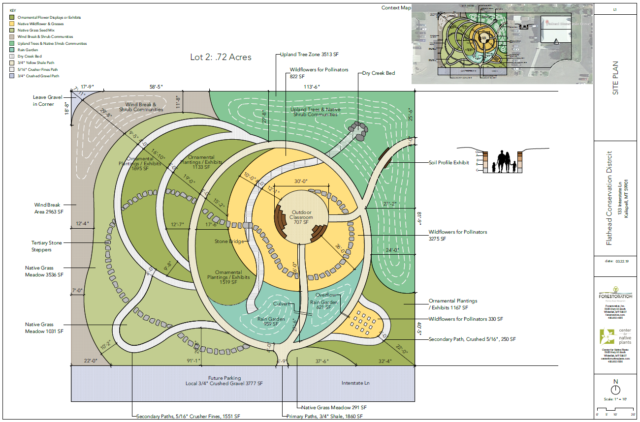
Thanks to all of our volunteers, sponsors, and funders!
We are so pleased to announce that we have received two generous grants to help us construct the Demonstration Garden. The first grant is from the Montana Native Plant Society and will be used to purchase a variety of native shrubs, perennials, and trees. The second grant we were awarded is the Conservation District “HB 223” grant. This grant, administered by DNRC, will be used to purchase education program supplies and printed materials.
We are also fortunate to be working with some great, local companies who are all coming together to make this project happen. Forestoration developed the site plan for us, Flathead County Weeds Department is helping us manage our noxious weeds, Badger Excavation is helping with site grading, Diamond Sprinklers is helping us install a custom irrigation system,and Green Earth Gardening is helping with hardscaping and path creation.
Are you interested in helping with the Demonstration Garden project? Looking for a volunteer opportunity or have a service you can provide? Contact us today, we’d love to have you on our team!
Wildflower Seeding: 07/29 – 08/07
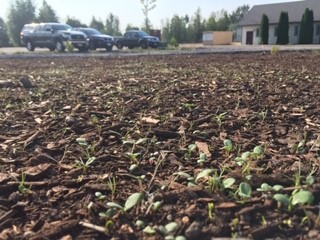
We seeded the area around the outdoor classroom with wildflower seeds. We used a mixture of native perennials and non-native annuals for this area. This summer, the non-native annuals will germinate and act as a cover crop, helping to keep the noxious weed population down. Over the winter most of these non-native species will be killed by the harsh conditions they’re not adapted for. Then in the spring, our native flowers will germinate and (hopefully) have a fighting chance against the weeds.
Final Grading and Hardscaping: 07/15 – 07/19/



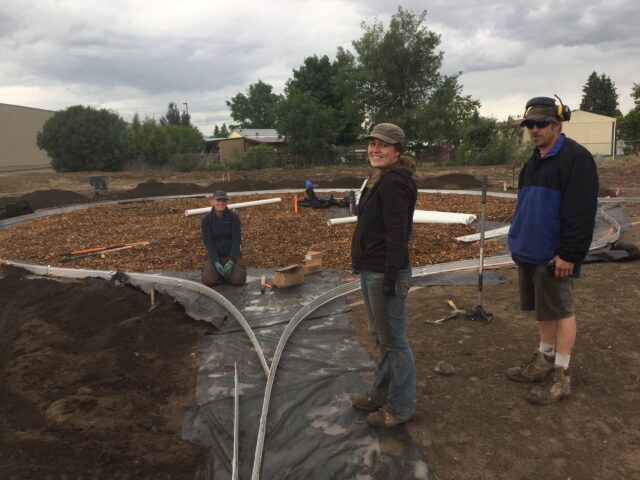
Putting in weed barrier and path edging 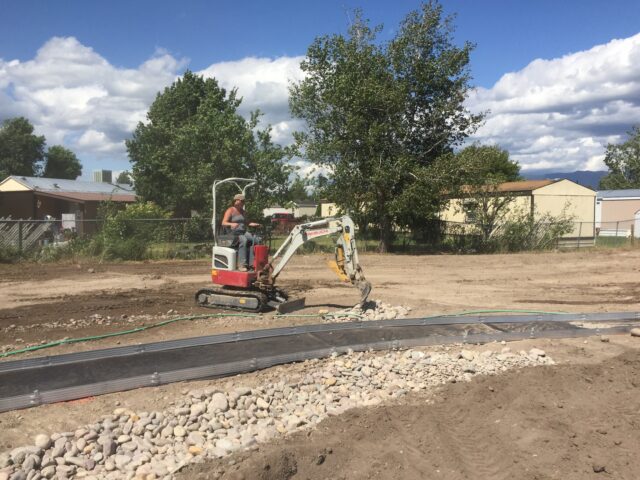
Excavating the dry streambed
Rough Grading: 06/05/2019
Soil Sampling: 05/22/2019
Fundamental to any successful gardening, landscaping, or farming effort is to understand your soil. Healthy soil contains lots of microorganisms and has good soil structure, the right balance of nutrients, and a moderate pH level. If your soil doesn’t have these components it can lead to reduced yield, increased susceptibility to diseases and pests, and lots of frustration.
To start our garden project off on the right foot, we used a soil probe to collected soil from 10 location across our site and sent a representative sample to a lab for testing. Thankfully the results came back similar to what we expected. The nitrogen, phosphorous, potassium, sulfur, zinc and copper are all low. But the salts, sodium, and pH are all at acceptable levels. That is, our soil’s fertility is low but there are no serious issues that can’t be remedied.
To improve our soil in specific locations we will be using some soil amendments including fertilizer this year. This will get the garden ready for planting now. Then, to improve our long-term soil health and reduce our costs by reducing the amount of soil amendments we need to purchase, we will also be using cover crops. We will be seeding different areas with a native grass mix and a wildflower mix. These plants will help protect the soil structure, replace the nutrients, and provide pollinator habit.
To learn how to sample your soil, check out our soil sampling how-to video.
Noxious Weed Management: 05/16/2019
We teamed up with Flathead County Weed Control Department to determine an integrated weed management plan that suits our needs and their staff assisted us by applying the chemicals directly. The lot was so thoroughly infested by noxious weeds that it was necessary to apply chemical controls to allow the native species we will be planting the best chance at competing. In the future we hope to manage the weeds through some spot spraying and lots of hand pulling.
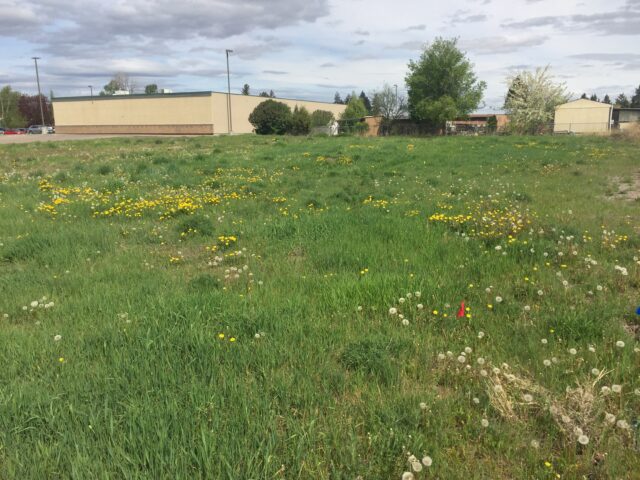
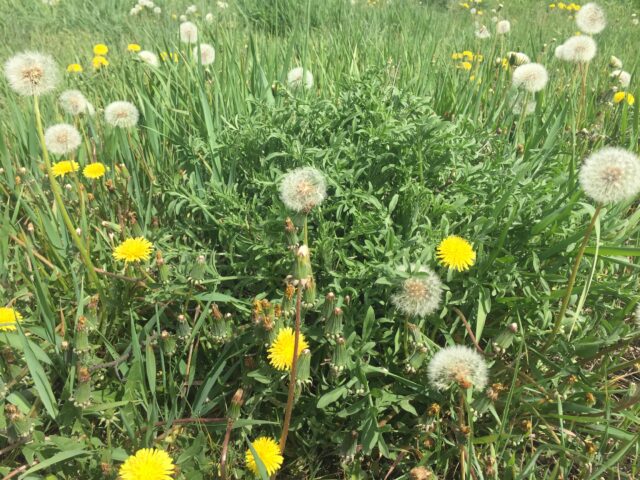
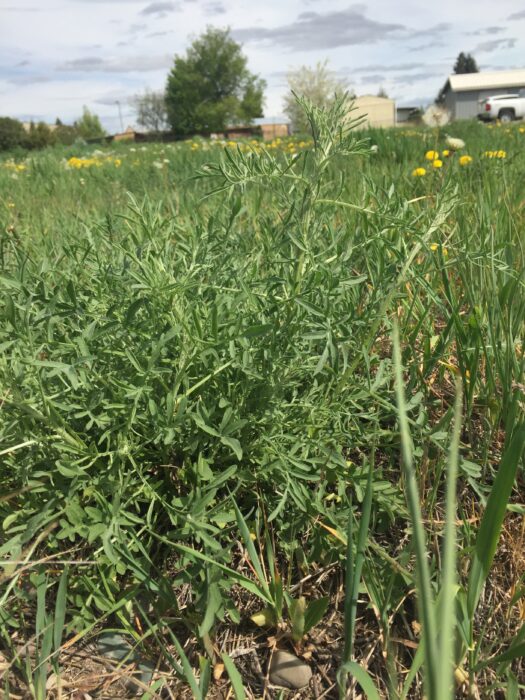

Spraying for noxious weeds prior to construction, 05/16/2019 
After treatment with broadleaf herbicide, 06/03/2019
